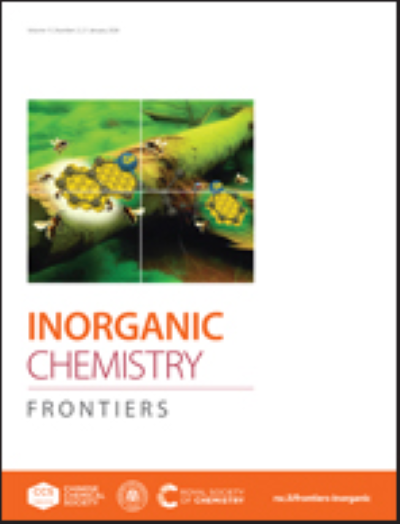Aqueous-Triggered Self-Destructive Persistent Luminescent Nanoparticles for Dynamic Hierarchical Security Encoding
IF 6.4
1区 化学
Q1 CHEMISTRY, INORGANIC & NUCLEAR
引用次数: 0
Abstract
Persistent luminescence has emerged as a robust platform for anti-counterfeiting applications due to its exceptional spatial-temporal decoding capability. Yet, conventional strategies often suffer from uniform emission patterns and predictable replication, compromising their security. Herein, we present “Snap-PLNPs”—near-infrared emitting CaS: Tm persistent luminescent nanoparticles engineered to undergo aqueous-triggered self-destruction via a hydrolysis mechanism. In contrast to traditional photophysical approaches, this chemically initiated degradation irreversibly terminates the luminescence, ensuring that security information can be decoded only once. Moreover, by incorporating an additional SiO₂ shell, we introduce a programmable delay in the hydrolysis process, thereby modulating the duration of the emission and adding a temporal regulation layer. This dual control—combining instantaneous chemical deactivation with time-resolved modulation—establishes a dynamic hierarchical security encoding framework. When embedded into laser-engraved logos, these CaS: Tm@SiO₂ hybrids enable a novel triple-layer anti-counterfeiting strategy that integrates spatial, temporal, and chemical dimensions. Our results underscore the potential of Snap-PLNPs as a next-generation platform for robust and adaptive security technologies.用于动态分层安全编码的水触发自毁持久发光纳米粒子
由于其卓越的时空解码能力,持续发光已成为防伪应用的强大平台。然而,传统的策略往往受到统一的发射模式和可预测的复制的影响,从而损害了它们的安全性。在这里,我们提出了“Snap-PLNPs”——近红外发射CaS: Tm持久性发光纳米颗粒,通过水解机制进行水触发的自毁。与传统的光物理方法相比,这种化学引发的降解不可逆转地终止了发光,确保安全信息只能被解码一次。此外,通过加入一个额外的SiO₂壳,我们在水解过程中引入了一个可编程的延迟,从而调节了发射的持续时间并增加了一个时间调节层。这种双重控制-结合瞬时化学失活和时间分辨调制-建立了一个动态分层安全编码框架。这些ca: Tm@SiO₂混合材料嵌入到激光雕刻的标识中,可以实现空间、时间、化学维度相结合的新型三层防伪策略。我们的研究结果强调了Snap-PLNPs作为下一代健壮和自适应安全技术平台的潜力。
本文章由计算机程序翻译,如有差异,请以英文原文为准。
求助全文
约1分钟内获得全文
求助全文
来源期刊

Inorganic Chemistry Frontiers
CHEMISTRY, INORGANIC & NUCLEAR-
CiteScore
10.40
自引率
7.10%
发文量
587
审稿时长
1.2 months
期刊介绍:
The international, high quality journal for interdisciplinary research between inorganic chemistry and related subjects
 求助内容:
求助内容: 应助结果提醒方式:
应助结果提醒方式:


